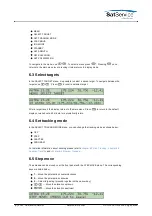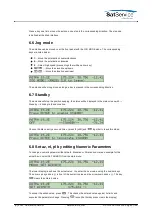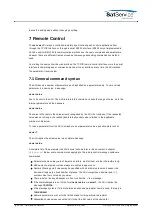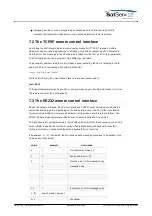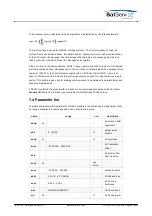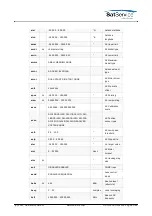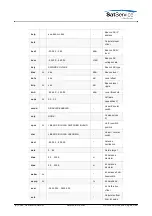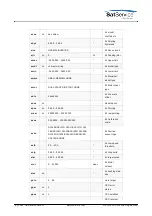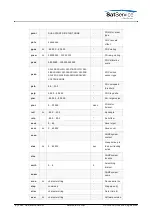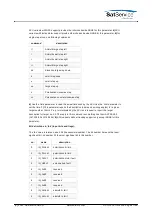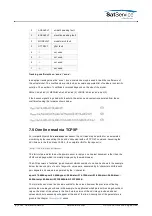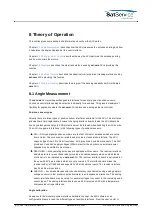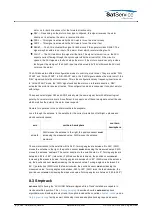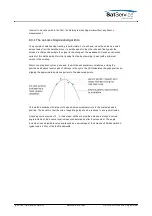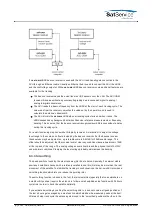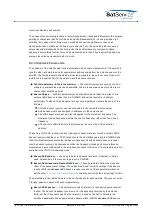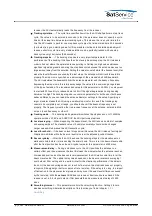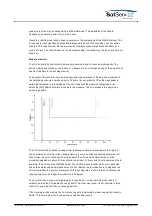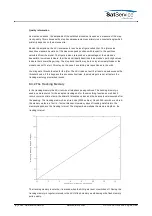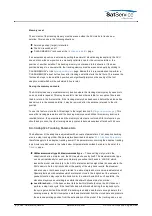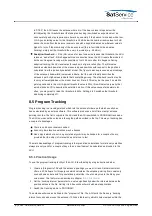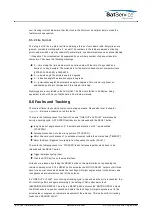
0
APEAKFLT
azimuth peaking fault
1
EPEAKFLT
elevation peaking fault
2
MODELFLT
model match fault
3
JITTRFLT
jitter fault
4
-/-
not used
5
-/-
not used
6
-/-
not used
7
-/-
not used
Tracking coefficients on 'acoe' / 'ecoe':
In adaptive tracking mode the 'acoe' / 'ecoe' commands may be used to read the coefficients of
the actual model. The coefficients are returned as a comma separated list of numbers in scientific
notation. The number o f coefficients returned depends on the size of the model:
SMALL: a0,a1,a2 (1) MEDIUM: a0,a1,a2,a3,a4 (2) LARGE: a0,a1,a2,a3,a4,a5 (3)
If the beacon signal drops below it's theshold, the antenna movement is calculated from these
coefficients using the formulas shown below:
For compatibility with the sat-nms power sensor, the ACU also may be polled for an automated
monitoring by the requesting the 'position' document with a HTTP GET command. Assuming the
ACU listens to the IP address 10.0.0.1, the complete URL for the request is:
http://10.0.0.1/point?fmt=txt
The 'fmt=txt' parameter forces the power sensor to reply a one line text document rather than the
HTML coded page which is normally displayed by the web browser.
The ACU answers a 'text/plain' type document which consists of one line. As shown in the example
below, the line consists of a set of keyword - value pairs, separated by '&' characters. Within each
pair, keyword and value are separated by the '=' character.
apos=174.688&epos=31.456&ppos=-34.5&atar=174.700&etar=31.500&ptar=-34.5&blev=-
64.33&temp=63.5&obit=FFFF0000&ibit=FFFF0000&
The format does not use fixed column widths for the values, however the precision of floating
point values is always as shown in the example. An application which parses this string should not
rely on the order of the values in the line. Future version of the ACU may provide additional
values which not necessarily will appear at the end of the line. A description of the parameters is
given in the chapter
Parameter list
above.
(C) 2022, SatService GmbH
www.satnms.com
ACU-19V2-UM-2209 Page 50/65

